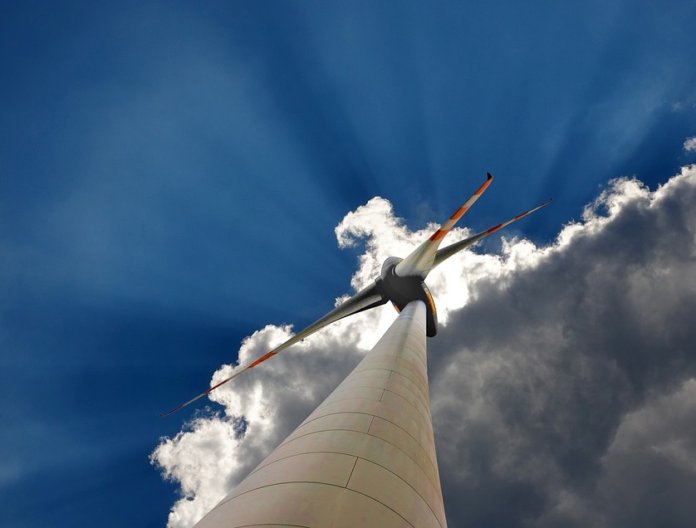Thanks to a strong second quarter for wind power investment, led by the U.S. and China, overall global clean energy investment was steady in the first half of 2018, according to new findings from Bloomberg Clean Energy Finance (BNEF).
According to BNEF, a mixed picture for global clean energy investment in 2018 is emerging: Dollar investment in solar is under pressure, while commitments to wind power and energy smart technologies – such as electric vehicles and batteries – are running above last year’s levels.
The latest authoritative figures from BNEF show world investment in clean energy in the first six months of 2018 at $138.2 billion – down just 1% from the same period in 2017. The second quarter, from April to June, actually saw an 8% rise year-on-year to $76.7 billion. (BNEF defines world investment in clean energy as investment in renewable energy, excluding large hydro-electric projects, plus equity-raising by companies in smart grid, digital energy, energy storage and electric vehicles.)
A sectoral split for the first half of 2018 shows solar investment down 19% to $71.6 billion compared to the same period last year and wind power up 33% at $57.2 billion.
According to the report, the slippage in solar reflects two main developments: 1) significantly lower capital costs for photovoltaic projects and, therefore, fewer dollars spent per megawatt installed and 2) a cooling-off in China’s solar boom. These trends are set to gather pace in the second half, notes BNEF.
“On June 1, the Chinese government released a policy document restricting new solar installations that require a national subsidy, with immediate effect,” explains Justin Wu, head of Asia Pacific at BNEF. “We expect this to lead to sharp drop in installations in China this year, compared to 2017’s spectacular record of 53 GW.”
Pietro Radoia, senior solar analyst at BNEF, adds, “It will also mean overcapacity in solar manufacturing globally and yet steeper price falls. Before the Chinese announcement, our team was already expecting a 27 percent fall in PV module prices this year. Now, we have revised that to a 34 percent drop to an end-2018 global average of 24.4 U.S. cents per watt.”
In the first half of 2018, China invested $35.1 billion in solar, down 29% from the first half of 2017. However, BNEF expects the full extent of the government-ordered cutback to become clear only from the second half of the year onward. Its analysts see a possibility that world solar installations in 2018 could fall for the first time on record. In 2017, they totaled 98 GW – far more than for any other technology, renewable or non-renewable, notes BNEF.
On the other hand, the jump in wind power investment in the first half of 2018 came thanks to a stream of large project financing from the U.S. to Taiwan and from India to the Netherlands and Norway. The headline deals included $1.5 billion for the 731.5 MW Borssele 3 and 4 offshore wind farm in Dutch waters, $1 billion for the 478 MW Hale County onshore wind project in Texas, and $627 million for the 120 MW Formosa 1 Miaoli project.
BNEF says U.S. wind investment stood out in the first half of 2018, reaching $17.5 billion, up by 121% on its figure in the same period of last year. Notably, Chinese wind investment was resilient, rising 4% to $17.6 billion in the first half.
“We see U.S. wind investment increasing in 2018-2019 as developers rush to finish projects in time to qualify for federal tax credits,” notes Amy Grace, BNEF’s head of North American research.
The report says wind was not the only strong sector in clean energy in the first half of 2018: Equity-raising by specialist companies in energy smart technologies saw a 64% increase year-on-year to $5.2 billion. The top deals in the second quarter were a $852.5 million initial public offering by Chinese lithium-ion battery maker Contemporary Amperex Technology, or CATL, and a $795 million Series B venture capital round by Chinese electric vehicle company Youxia Motors. Another Chinese EV specialist, Future Mobility Corp., raised $500 million in a Series B round of its own.
The smaller sectors of clean energy – biomass and waste, small hydro, geothermal, and biofuels – each saw investment in the $0.7-1.2 billion range in the first half of the year. Apart from biofuels, each was down compared to the same period in 2017, according to BNEF.
The overall investment figure for clean energy globally – $138.2 billion – in the first half of 2018 features the following country-level performances:
- China: $58.1 billion, down 15% compared to the first half of 2017
- U.S.: $28.8 billion, up 31%
- Europe: $16 billion, up 8%
- India: $7.4 billion, up 22%
- Australia: $4.1 billion, down 1%
- Morocco: $2.5 billion, up 12-fold
- Netherlands: $2.3 billion, up 209%
- Japan: $2.2 billion, down 67%
- Vietnam: $2 billion, up 136-fold
- Mexico: $1.9 billion, down 20%
- South Africa: $1.7 billion, up 35-fold
- Spain: $1.5 billion, up 652%
- Ukraine: $1.4 billion, up 12-fold
- Germany: $1.3 billion, down 77%
- France: $1.3 billion, down 13%
- Norway: $1.1 billion, up 231%
- Canada: $862 million, up 4%
- The U.K.: $664 million, down 51%
- Brazil: 597 million, down 81%
More on BNEF’s report can be found here.




